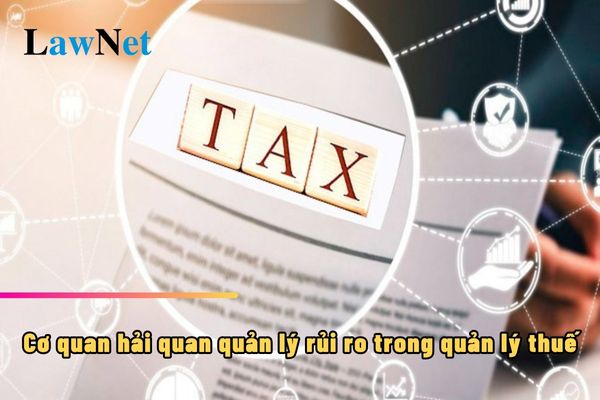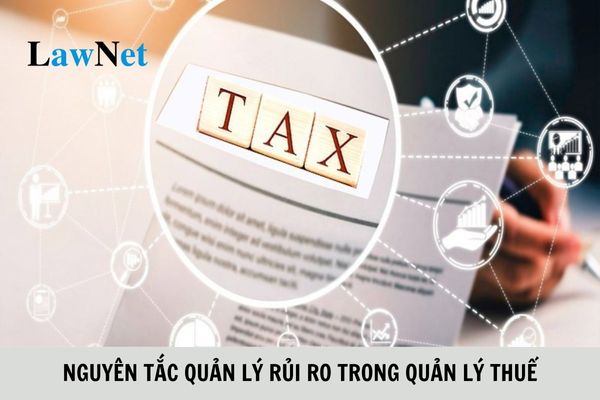What are regulations on risk management in tax administration by customs authorities in Vietnam?
What are regulations on risk management in tax administration by customs authorities in Vietnam?
According to Article 9 of the Tax Administration Law 2019, the management of risks in tax administration is stipulated as follows:
- Tax authorities apply risk management in taxpayer registration, tax declaration, tax payment, tax debt, enforcement of administrative decisions on tax management, tax refund, tax inspection, tax audit, the management and use of invoices, vouchers, and other activities in tax administration.
- Customs authorities apply risk management in tax declaration, tax refund, tax exemption, tax inspection, tax audit, and other activities in tax administration.
- The application of risk management mechanisms in tax administration includes the collection and processing of information and data related to taxpayers; the development of tax management criteria; the assessment of taxpayer compliance with the law; the classification of risk levels in tax administration and the implementation of appropriate tax management measures.
- The evaluation of taxpayer compliance and classification of risk levels in tax administration are regulated as follows:
+ The evaluation of taxpayer compliance with the law is based on a system of criteria, information on the taxpayer's activity history, compliance process, and cooperation with tax authorities in implementing tax laws and the degree of tax law violations;
+ The classification of risk levels in tax administration is based on the level of taxpayer compliance with the law. During the risk level classification process, tax authorities consider related contents, including information on risk indicators; signs, behaviors of violations in tax management; and information on business results of tax authorities and other relevant agencies as stipulated by this Law;
+ Tax authorities use the results of taxpayer compliance evaluations and the classification of risk levels in tax administration to apply appropriate tax management measures.
- Tax authorities apply information technology systems to automatically integrate and process data to serve the application of risk management in tax administration.
- The Minister of Finance stipulates the criteria for evaluating taxpayer compliance, classifying risk levels, and applying risk management in tax administration.
Thus, in accordance with the aforementioned regulations, customs authorities manage risks in tax administration through tax declarations, tax refunds, tax exemptions, tax inspections, tax audits, and other activities.

What are regulations on risk management in tax administration by customs authorities in Vietnam? (Image from the Internet)
What is the purpose of risk management in tax administration in Vietnam?
According to Clause 15, Article 3 of the Tax Administration Law 2019, it is stated as follows:
Definitions
In this Law, the following terms are understood as follows:
1. Tax is a mandatory state budget contribution of organizations, households, business households, and individuals as stipulated by tax laws.
2. Other state budget revenues managed by tax authorities include:
a) Fees and charges according to the Law on Fees and Charges;
b) Land use money paid to the state budget;
c) Land and water surface rental fees;
d) Licensing fees for mineral extraction;
dd) Licensing fees for water resource exploitation;
e) Payments to the state budget from the sale of assets on land, transfer of land use rights as regulated by the Law on Management and Use of Public Assets;
g) Fines from administrative violations as regulated by laws on administrative violations in the field of taxation and customs;
h) Late payment fines and other revenue according to laws.
3. Other state budget revenues not managed by tax authorities include:
a) Sea area usage fees for dumping as regulated by laws on marine and island resources and environment;
b) Money for protecting and developing rice cultivation land according to the Land Law;
c) Fines from administrative violations as regulated by laws on administrative violations, except in the field of taxation and customs;
d) Payments to the state budget according to the Law on Management and Use of Public Assets from the management, use, exploitation of public assets for business purposes, leasing, joint ventures, after fulfilling tax obligations, fees, and charges;
dd) Aid funds;
e) Other revenues as regulated by law.
4. The headquarters of the taxpayer is the place where the taxpayer conducts part or all of their business activities, including the main headquarters, branches, stores, production sites, warehousing sites, places for storing goods and assets used for production and business; residence places or places where tax obligations arise.
5. The tax identification number is a sequence of 10 digits or 13 digits and other characters issued by tax authorities for taxpayers to use in tax management.
6. The tax period is the timeframe to determine the amount of tax payable to the state budget as regulated by tax laws.
7. The tax declaration form is a form prescribed by the Minister of Finance used by taxpayers to declare information to determine the amount of tax payable.
8. The customs declaration form is a form prescribed by the Minister of Finance used as a tax declaration for exported and imported goods.
9. The tax dossier is the set of documents for taxpayer registration, tax declaration, tax refund, tax exemption, tax reduction, tax deferment, paying tax debt in installments, tax non-collection; customs dossiers; debt freezing dossiers; tax debt, late payment interest, and penalty debt write-off.
10. Tax finalization declaration is the determination of the amount of tax payable for the taxable year or from the beginning of the tax year until the cessation of activities generating tax obligations or from the occurrence to the cessation of activities generating tax obligations as regulated by law.
11. The tax year is determined according to the calendar year from January 01 to December 31; for fiscal years different from the calendar year, the tax year applies to the fiscal year.
12. Completing tax obligations means paying the full amount of tax payable, late payment interest, fines for tax law violations, and other state budget revenues.
13. Enforcement of administrative decisions on tax management is the application of measures stipulated by this Law and other relevant laws to compel taxpayers to complete their tax obligations.
14. Tax risk is the possibility of taxpayer non-compliance leading to state budget revenue losses.
15. Risk management in tax administration is the systematic application of legal regulations, professional processes to identify, evaluate, and classify risks that may negatively impact the effectiveness and efficiency of tax administration, serving as a basis for tax authorities to allocate resources appropriately and apply efficient management measures.
...
Thus, according to the above regulations, risk management in tax administration is to identify, evaluate, and classify risks that may negatively impact the effectiveness and efficiency of tax administration.
Does tax audit apply risk management in tax administration in Vietnam?
According to Clause 1, Article 107 of the Tax Administration Law 2019, it is stipulated as follows:
Principles of tax inspection and tax audit
1. Apply risk management in tax administration and information technology in tax inspection and tax audit.
2. Comply with the regulations of this Law, other relevant laws, and inspection, audit forms, procedures, and dossiers prescribed by the Minister of Finance.
3. Do not obstruct the normal activities of taxpayers.
4. When conducting tax inspections and audits at the taxpayer's headquarters, the head of the tax administration must issue an inspection, audit decision.
5. The purpose of tax inspection and audit is to evaluate the completeness, accuracy, and truthfulness of the documents, information, and dossiers that taxpayers have declared, submitted, presented to the tax administration; assess the taxpayer's compliance with tax laws and other relevant laws to handle tax issues according to the law.
Thus, in the tax inspection operations, risk management in tax administration must be applied.



- When is the deadline for paying tax, duty payment guarantee and tax deposit in Vietnam?
- Are natural aquatic resources exempt from severance tax in Vietnam?
- Are natural swallow's nests subject to severance tax in Vietnam?
- What are the principles for developing a List of goods to be imported free of duty in Vietnam?
- How long is the CIT period of the first year in Vietnam?
- Shall individuals be entitled to tax refund if their taxed incomes do not reach a tax-liable level in Vietnam?
- What are regulations on responsibilities of income payer regarding PIT refund when being delegated to settle tax in Vietnam?
- Is it necessary to terminate the tax identification number when a business temporarily suspends its operations in Vietnam?
- What is the value-added tax declaration form for 2024 in Vietnam?
- What are forms for declaring corporate income tax in Vietnam?

